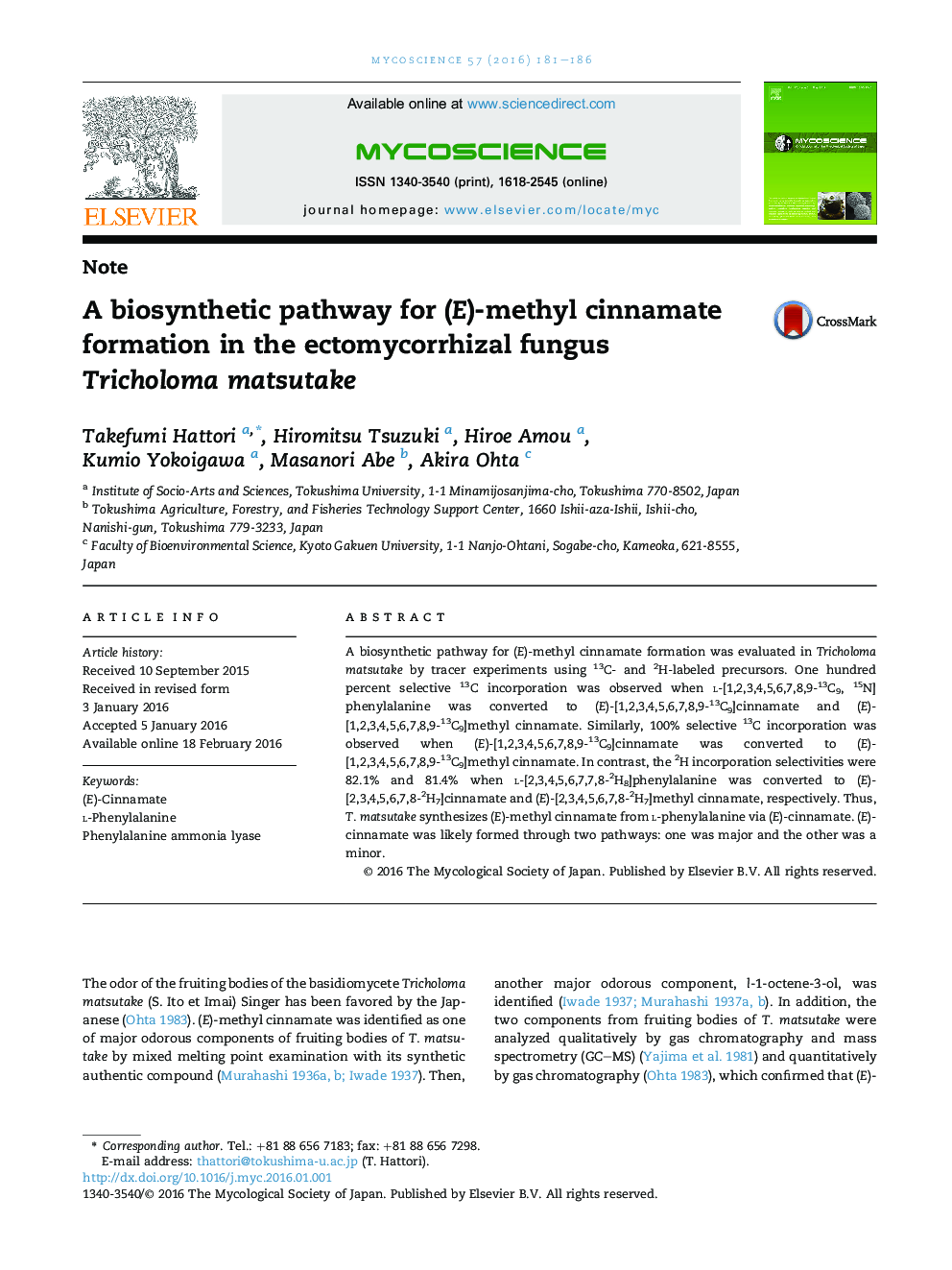| کد مقاله | کد نشریه | سال انتشار | مقاله انگلیسی | نسخه تمام متن |
|---|---|---|---|---|
| 2060118 | 1076300 | 2016 | 6 صفحه PDF | دانلود رایگان |

• Methyl cinnamate was formed from phenylalanine via cinnamate in Tricholoma matsutake.
• No C–C bond cleavage occurred for phenylalanine and cinnamate during the reactions.
• C–H bond cleavage occurred partly was not explained by PAL catalytic activity.
A biosynthetic pathway for (E)-methyl cinnamate formation was evaluated in Tricholoma matsutake by tracer experiments using 13C- and 2H-labeled precursors. One hundred percent selective 13C incorporation was observed when l-[1,2,3,4,5,6,7,8,9-13C9, 15N]phenylalanine was converted to (E)-[1,2,3,4,5,6,7,8,9-13C9]cinnamate and (E)-[1,2,3,4,5,6,7,8,9-13C9]methyl cinnamate. Similarly, 100% selective 13C incorporation was observed when (E)-[1,2,3,4,5,6,7,8,9-13C9]cinnamate was converted to (E)-[1,2,3,4,5,6,7,8,9-13C9]methyl cinnamate. In contrast, the 2H incorporation selectivities were 82.1% and 81.4% when l-[2,3,4,5,6,7,7,8-2H8]phenylalanine was converted to (E)-[2,3,4,5,6,7,8-2H7]cinnamate and (E)-[2,3,4,5,6,7,8-2H7]methyl cinnamate, respectively. Thus, T. matsutake synthesizes (E)-methyl cinnamate from l-phenylalanine via (E)-cinnamate. (E)-cinnamate was likely formed through two pathways: one was major and the other was a minor.
Journal: Mycoscience - Volume 57, Issue 3, May 2016, Pages 181–186